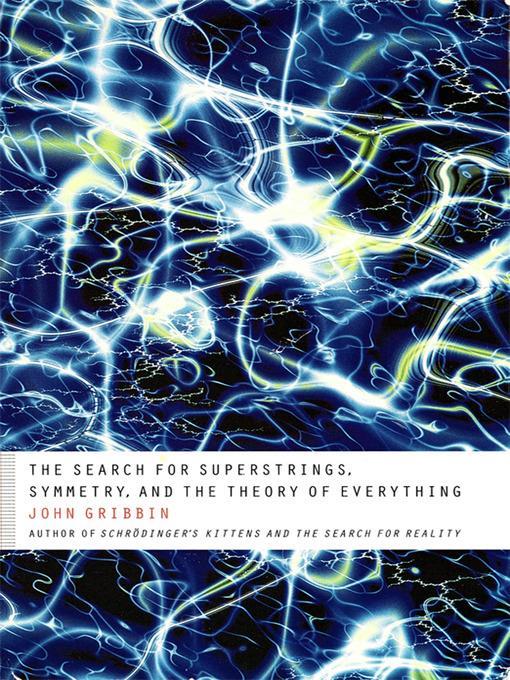
The Search for Superstrings, Symmetry, and the Theory of Everything
کتاب های مرتبط
- اطلاعات
- نقد و بررسی
- دیدگاه کاربران
نقد و بررسی

January 4, 1999
Ever since Einstein came up with the General Theory of Relativity, the Holy Grail of physics has been a "Theory of Everything" that would explain the behavior of all the particles and forces in nature in one set of equations. Popular science writer Gribbin tackles this quest in a thorough yet palatable primer geared to the serious reader. He starts with a clear introduction to the subatomic particle zoo (the subject of his last book, Schrodinger's Kittens and the Search for Reality). Where once protons, neutrons and electrons reigned, there is now a "periodic table" of particles, and physicists have to worry about a potentially infinite number of types of particles with names like W and Z bosons, red up quarks, blue down quarks, etc. From there, Gribbin moves on to supersymmetry, a theory that attempts to bring Einsteinian space-time back into the quantum-mechanical fold of contemporary particle physics. Many physicists now treat particles not as points but as strings, tiny one-dimensional entities vibrating in 10-dimensional space-time. Gribbin helps us get our bearings in a universe of 11 dimensions, and while he refrains from the cosmic speculations of, say, Paul Davies, diligent readers without any specialized knowledge of physics or mathematics will come away with a flavor of the latest ideas theorists are grappling with, including the six major rival contenders for the TOE (Theory of Everything). An appendix previews the experiments scientists are planning in their attempts to create "little bangs," particle-accelerator collisions that may reveal what types of matter arose during the primal Big Bang. Overall, this is an exciting tour de force. 23 drawings.

September 15, 1998
Following on the heels of Greene's book, here is a title on string theory from the author of the best-selling Schrodinger's Kittens.

January 1, 1999
Unless one holds a physics doctorate and can tolerate 26 dimensions, the world of the "supersmall" seems unapproachably alien. Once again, the guide to the frontier is Gribbin, prolific popularizer of physics and physicists. Elsewhere he has explained quantum mechanics ("In Search of Schrx9a dinger's Cat," 1984); here he introduces the "quarky" zoo of subatomic particles and their mediating forces, Gribbin himself mediating for generalists the theories advanced to explain and unify them. Regularly cautioning that genuine understanding of the theories requires complex mathematics, Gribbin nevertheless achieves a verbal "compactification," to borrow string theory jargon, that at least allows the "numero-phobic" to appreciate why physicists are superexcited about supersymmetry and superstrings. Although no particle accelerator has ever created a string, the putative irreducible entity responsible for all particles and forces, physicists are jumping on the string bandwagon--and daring ones are constructing an even more arcane vehicle to describe everything: "membrane" theory. In these mind-bending realms, Gribbin's seasoned skills wonderfully simplify matters (and forces) without "dumbifying" them. ((Reviewed January 1 & 15, 1999))(Reprinted with permission of Booklist, copyright 1999, American Library Association.)

























دیدگاه کاربران